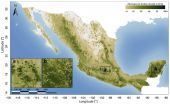(Press-News.org) New research into a rare pathogen has shown how a unique evolutionary trait allows it to infect even the healthiest of hosts through a smart solution to the body's immune response against it.
Scientists at the University of Birmingham have explained how a particular strain of a fungus, Cryptococcus gattii, responds to the human immune response and triggers a 'division of labour' in its invading cells, which can lead to life-threatening infections.
Once inhaled, the pathogen can spread through the body to cause pneumonia or meningitis. The outbreak strain of this fungus differs significantly from other strains because it threatens the lives of healthy people – those with a strong immune response – rather than those usually considered at risk of infection.
Professor Robin May, from the University of Birmingham, explained, "It is important to point out that the risk to any individual is still very low: the fungus is non-contagious and cannot be passed between humans, or indeed from animals to humans, so we're not presenting a doomsday scenario here."
"But by understanding how this particular lineage behaves once in the body, we have provided an insight into the key mystery of why it is virulent in immunocompetent people – that is those with a strong immune system."
When invaded by an outbreak strain, the host body creates reactive oxygen species (ROS). ROS form an essential part of the antimicrobial defence in mammals and works to prevent the spread of harmful pathogens by cleansing the body of invasive cells. A strong ROS reaction usually makes people less susceptible to infections, but in the case of Cryptococcus gattii the tables are turned and the fungus uses this reaction to its own benefit.
The study, published in Nature Communications, outlines how the unique pathogen uses the release of ROS as a signal to trigger a 'division of labour' in the intracellular fungal population.
"We don't often think of invasive cells working as a team, if you will, but this seems to be a smarter response. When they encounter ROS, the cells adopt different roles. Some sacrifice themselves for the benefit of others, and form a protective barrier that allows the rapid growth of neighbouring cells – allowing the establishment of the pathogen. This isn't something that we've seen before."
The outbreak is believed to infect humans who inhale spores or yeast from soil or leaves of certain tree species, such as Eucalyptus and some fir species. Though most people don't become infected, those that do tend not to experience any effects until between two and fourteen months after exposure.
Treatment of the disease is usually a combination of IV therapies and anti-fungal medication.
The disease, once thought to be restricted to tropical regions, gained attention after a reported case in British Columbia, Canada in 1999. Over 450 cases have since been reported in North America, making it the largest ever outbreak of a life-threatening fungal infection in healthy people.
Previous research has sought to identify how this particular lineage of Cryptococcus gattii came to appear in North America from a likely origin in the Amazon Rainforest. A number of suggestions have been put forward, from climate change to the migratory patterns of humpback whales, though Professor May is sceptical.
"It's unlikely that climate change, or indeed whale migration, is behind this. However it got there, though, it really is a fascinating story of evolution. Cryptococcus gattii displays unique traits and has adapted to new environments in such a way that it presents us with a chance to make huge strides in understanding how these pathogens operate and, hopefully, make sure we are a well prepared to deal with future outbreaks."
INFORMATION:
(Vienna, October 17, 2014) Two new pill-only regimens that rapidly cure most patients with genotype 1 hepatitis C (HCV) infection could soon be widely prescribed across Europe. Two recently-published studies1,2 confirmed the efficacy and safety of combination therapy with two oral direct-acting antiviral agents (DAAs), with around 90% of patients cured after just 12-weeks of treatment.
At the 22nd United European Gastroenterology Week (UEG Week 2014) in Vienna, Austria, Professor Michael P. Manns from Hannover Medical School in Germany will be presenting this data and ...
A group of researchers led by Melina Bersten of the Kavli Institute for the Physics and Mathematics of the Universe recently presented a model that provides the first characterization of the progenitor for a hydrogen-deficient supernova. Their model predicts that a bright hot star, which is the binary companion to an exploding object, remains after the explosion. To verify their theory, the group secured observation time with the Hubble Space Telescope (HST) to search for such a remaining star. Their findings, which are reported in the October 2014 issue of The Astronomical ...
Peering through a giant cosmic magnifying glass, NASA's Hubble Space Telescope has spotted a tiny, faint galaxy -- one of the farthest galaxies ever seen. The diminutive object is estimated to be more than 13 billion light-years away.
This galaxy offers a peek back to the very early formative years of the universe and may just be the tip of the iceberg.
"This galaxy is an example of what is suspected to be an abundant, underlying population of extremely small, faint objects that existed about 500 million years after the big bang, the beginning of the universe," explained ...
NASA is carrying out its sixth consecutive year of Operation IceBridge research flights over Antarctica to study changes in the continent's ice sheet, glaciers and sea ice. This year's airborne campaign, which began its first flight Thursday morning, will revisit a section of the Antarctic ice sheet that recently was found to be in irreversible decline.
For the next several weeks, researchers will fly aboard NASA's DC-8 research aircraft out of Punta Arenas, Chile. This year also marks the return to western Antarctica following 2013's campaign based at the National Science ...
NASA's Interface Region Imaging Spectrograph (IRIS) has provided scientists with five new findings into how the sun's atmosphere, or corona, is heated far hotter than its surface, what causes the sun's constant outflow of particles called the solar wind, and what mechanisms accelerate particles that power solar flares.
The new information will help researchers better understand how our nearest star transfers energy through its atmosphere and track the dynamic solar activity that can impact technological infrastructure in space and on Earth. Details of the findings appear ...
Parasitic bacteria were the first cousins of the mitochondria that power cells in animals and plants – and first acted as energy parasites in those cells before becoming beneficial, according to a new University of Virginia study that used next-generation DNA sequencing technologies to decode the genomes of 18 bacteria that are close relatives of mitochondria.
The study appears this week in the online journal PLOS One, published by the Public Library of Science. It provides an alternative theory to two current theories of how simple bacterial cells were swallowed ...
The need for food, animal feed and fuel in the Sahel belt is growing year on year, but supply is not increasing at the same rate. New figures from 22 countries indicate falling availability of resources per capita and a continued risk of famine in areas with low 'primary production' from plants. Rising temperatures present an alarming prospect, according to a study from Lund University in Sweden.
The research has investigated developments between the years 2000 and 2010 in the Sahel belt, south of the Sahara Desert. Over this ten-year period, the population of the region ...
Cold Spring Harbor, NY – How many times have we seen Superman swoop down from the heavens and rescue a would-be victim from a rapidly oncoming train?
It's a familiar scenario, played out hundreds of times in the movies. But the dramatic scene is reenacted in real life every time a cell divides. In order for division to occur, our genetic material must be faithfully replicated by a highly complicated machine, whose parts are tiny enough to navigate among the strands of the double helix.
The problem is that our DNA is constantly in use, with other molecular machines ...
Available for download today, the Woods Hole Research Center (WHRC) and Allianza MREDD+ released the first detailed map of aboveground forest carbon stocks of Mexico. This carbon stock inventory is very valuable for Mexico, as one of the first tropical nations to voluntarily pledge to mitigation actions within the context of the United Nation's Reducing Emissions from Deforestation and forest Degradation (REDD+) program.
The hectare-scale map is the result of a collaboration led by WHRC scientists Josef Kellndorfer and Oliver Cartus with Mexico's National Forestry Commission ...
1. Conventional medical centers may be unable to prevent spread of Ebola
A group of infectious disease experts suggests that conventional U.S. medical centers are unprepared and ill equipped to manage Ebola and a national network of specialized containment and treatment facilities may be needed to reduce the virus' spread, according to an article being published in Annals of Internal Medicine. Despite efforts from the Centers for Disease Control and Prevention (CDC) to prepare hospitals for Ebola, enormous challenges remain. The authors express doubt that conventional ...






